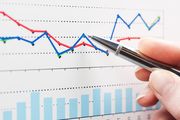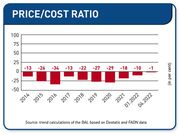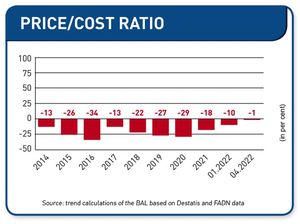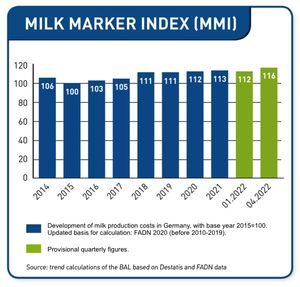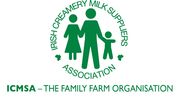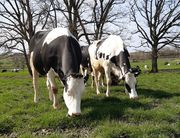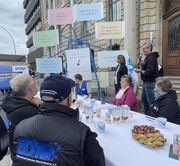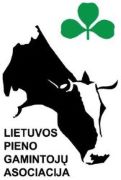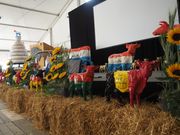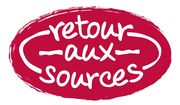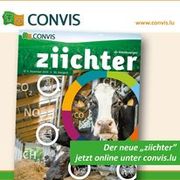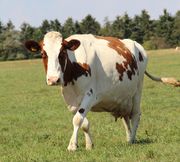EMB Newsletter July/August 2022
Newsletter as PDF
Contact
EMB - European Milk Board asbl
Rue de la Loi 155
B-1040 Bruxelles
Phone: +32 - 2808 - 1935
Fax: +32 - 2808 - 8265
Dear dairy farmers, dear interested parties,

Since COVID-19 barged into our lives two years ago, we have witnessed many phenomena that have led to positive evolutions in milk prices on our farms, even though, unfortunately, a cost shortfall continues to be a reality in most countries in the EU, especially in France! Production costs have sky-rocketed in all sectors.
COVID-19 disrupted supply chains at times. Then the war in Ukraine, which, like all wars, brought fear, anxiety and all kinds of disruption, especially financial uncertainty which also led to speculation on food markets. But above all else, in my opinion, milk production in Europe is shrinking. For too long now, organisations like the EMB have been sounding the alarm about the medium and long-term effects of the foul system we have been dealing with for 20 years. With no money coming in, farmers decide to permanently stop milk production, with no hope of resuming their activity some day! The youth essentially overlooks this profession, which makes total sense, even if I observe this loss with the deepest regret. Most livestock farmers still in business have tried to optimise their production by increasing herd size, investing in technologies to compensate for labour shortages, forming partnerships etc. But nothing seems to come of it all and farmers are tired, especially those who have already spent 20 years in the sector and have realised that no one ever really understood them or understands them anymore.
Food sovereignty
Over the last 20 years, France has lost more than half its dairy farmers. This reduction in the number of producers not only represents a loss in know-how and experience. It also means that we have fewer people maintaining rural landscapes and, above all else, guaranteeing food security for French and European consumers. Food security will soon hang in the balance if we do not radically change this system that does not allow producers to make a decent living.
Ensuring food sovereignty is, first and foremost, aligning production with consumption. The kind of production deregulation that was unleashed throughout Europe in 2003 and that has only increased up to 2021 has led to very low prices that do not even cover production costs. Through the EMB and our member organisations in most European countries, we relentlessly warned every policy and decision-maker we could. Cooperatives (especially the large ones), interbranch organisations, the dairy industry, supermarkets and policy-makers – all should be key stakeholders striving for real harmony and equity for all. Not only did we warn, we also proposed solutions.
How do you ensure good remuneration for farmers?
Margins should finally be shared among producers, industry and retailers. To this aim, producers should have a stronger position and should be better organised because even as part of a cooperative, it is not possible to negotiate and thus impose your price.
Producer organisations
Negotiation is a show of force and in this area, we are very badly organised. And this is the case even though more than 60% of milk production is collected by cooperatives in some countries and even 100% in others. These cooperatives should stop being the vertical producer structures they are today and should allow their members to join a cross-dairy producer organisation. We are all part of the European market and we should have just a few European producer organisations. We are so weak because we are too many when negotiating with just a few purchasers who can choose from among us and thus bring down prices. I am in favour of cooperatives for milk collection, for shared refrigeration facilities, but they should not be the ones dealing with the milk price.
Market Responsibility Programme
For many years now, we have told everyone willing to listen to implement our programme as a way to avoid overproduction and thus match supply with demand. Let’s not forget that the excess supply we have experienced for almost 20 years is the reason behind the dwindling number of livestock farmers today and the production shortages that we will experience tomorrow – without any mention of the disaster this has provoked in developing regions like Africa, because the only way to offload these surpluses is to export them on the world market.
Policy-makers and our governments
Our political leaders are elected to ensure the well-being of everyone in their entire region. They should be the ones arbitrating between us and our purchasers in such a way that all products are sold to citizens at a fair price. They should help us implement solutions that serve everyone, that guarantee food sovereignty, and that promote social and environmental sustainability. Clearly, they have quite a bit on their plate but with a true willingness to improve things for everyone, these objectives are not insurmountable. This would perhaps lead to young people returning to the sector – something that is urgently needed given the average age among farmers today.
Our Fair Milk
Our Fair Milk brand is a great example, and our members would wholeheartedly agree. Now all we need is for you, dear fellow producers, to see the added value of this solution and to join en masse. But a word of caution – do not fall for schemes that stand out in terms of remuneration but do not belong to producers themselves. We know all too well that they will not be sustainable, and certainly not fairer.
The CAP and the European Green Deal
In a well-regulated market, both milk purchasers and processors have a role to play. At EU level, the Common Agricultural Policy (CAP) and the European Green Deal should be built on social and environmental sustainability. For the market to be in a position to contribute to such a transformation in the agricultural sector, prices should be fixed at a level that permits full coverage of all production costs. Furthermore, tools aimed at slowing down the current rapid decline in number of farmers should be implemented as well.
Creating the conditions for fair competition
Imported agricultural products should be subject to “mirror clauses” to ensure that agricultural products that do not comply with EU standards do not enter the EU market. Consumers in the EU have the right to the same degree of sanitary and environmental protection, irrespective of where their food is produced. By replacing local EU products, which are more expensive to produce due to stricter local standards, with “cheap” imports, we are simply displacing production and environmentally damaging emissions beyond the EU’s borders.
Boris Gondouin, member of the EMB and APLI Executive Committee
General Assembly: dairy farmers from across Europe - active politically and on the market for fair agricultural production
Irelands’ new CAP
The CAP in Belgium: diverging developments in Flanders and Wallonia
CAP Strategy Plan – Germany must make improvements
Lithuanian CAP Strategic Plan
Fair, Fairer, Faironika
In the kingdom of greenwashing, Aldi reigns supreme
Sustainability tool for farms
Quality comes at a price
Impressum
European Milk Board asbl
Rue de la Loi 155
B-1040 Bruxelles
Phone: +32 2808 1935
Fax: +32 2808 8265
E-Mail: office@europeanmilkboard.org
Website: http://www.europeanmilkboard.org



